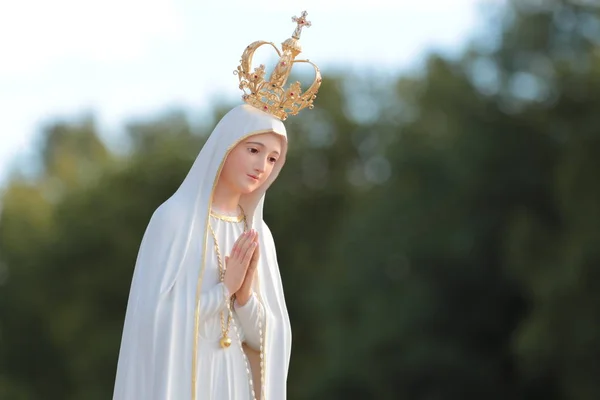The Astonishing Miracle of John Traynor: From Broken Veteran to Lourdes Pilgrim
On September 10, 1937, Reverend Patrick O’Connor, a missionary of St. Columban, found himself face-to-face with a miracle in the bustling railway station of a French town. That miracle had a name—John Traynor. Towering at five feet ten, with a strong ruddy face and a burly frame, Traynor’s presence stood out. Yet, his mere ability to stand and move, let alone his robust health, was nothing short of miraculous. Years earlier, medical science had written him off as an incurable wreck, destined to remain paralyzed, epileptic, and riddled with unhealing wounds.
But by God’s grace, through the intercession of Our Lady of Lourdes, John Traynor defied the laws of nature. His story, painstakingly verified by newspaper accounts, official medical reports, and eyewitness testimonies, is a testament to faith, perseverance, and the miraculous power of Lourdes.
John Traynor’s Early Life and Military Service
Born in Liverpool to Irish parents, John Traynor grew up in a home steeped in Catholic faith. His mother, a devout daily communicant, left him a legacy of deep devotion to the Blessed Virgin Mary.
When World War I erupted in 1914, Traynor was mobilized with the Royal Naval Reserve. During the ill-fated Antwerp expedition, he was severely injured, suffering a head wound from shrapnel. Although he miraculously recovered and returned to duty, his service took him to Gallipoli in 1915, where his life would change forever.
At Gallipoli, Traynor faced one of the deadliest battles of the war. Leading men through relentless gunfire, he was struck by machine-gun bullets that wounded his chest, head, and right arm. Despite the bravery that earned him the respect of his comrades, these injuries left him permanently disabled. His right arm was paralyzed, his legs partly immobile, and his skull bore a gaping hole where shrapnel had damaged his brain. Frequent epileptic fits compounded his suffering. By 1923, eight years after Gallipoli, he was declared incurably incapacitated by no less than ten doctors.
A Pilgrimage of Faith
In July 1923, news of a diocesan pilgrimage to Lourdes reached Traynor. Despite his critical condition, he resolved to make the journey, trusting in the Blessed Virgin’s intercession. His decision faced stiff resistance. Doctors warned he would likely die en route, and even the priest organizing the pilgrimage begged him to reconsider. Traynor, however, remained steadfast. “If I die, I’ll die in a good cause,” he said.
With the help of neighbors, Traynor scraped together the funds for the trip, even pawning his wife’s few pieces of jewelry. Against all odds, and amid protests from family, friends, and doctors, he embarked on the arduous journey to Lourdes.
The pilgrimage itself was grueling. Traynor, severely weakened, suffered multiple epileptic fits and hemorrhages along the way. At several points, attendants feared he wouldn’t survive the journey. Upon arrival in Lourdes, his condition remained critical. Yet, despite the odds, Traynor insisted on participating in all devotions, including being bathed in the waters of the Grotto spring.
The Miracle at Lourdes
On July 25, 1923, Traynor was wheeled to the baths for what seemed to be his final attempt at healing. His legs, long paralyzed, suddenly began to move violently. Those attending him feared another epileptic seizure. When he was placed in the bath, Traynor experienced a surge of strength.
Later that day, during the Blessed Sacrament procession, Archbishop of Rheims blessed him with the monstrance. At that moment, Traynor realized something extraordinary. His right arm, paralyzed since 1915, began to move. The atrophied muscles regained life, and he was able to make the sign of the cross for the first time in years.
He stood up, walked unaided, and felt his body restored. His wounds healed, his strength returned, and the epileptic fits ceased completely. The paralytic, the man declared incurable by doctors, was whole again.
Medical Verification and the Testimony of Faith
Traynor’s healing wasn’t just a matter of personal testimony. His case was thoroughly examined by six doctors, including specialists from England, France, and Belgium. Their official report confirmed the permanence of his cure. The Catholic Medical Bureau in Lourdes declared it a genuine miracle, attributing his recovery to divine intervention through the intercession of Our Lady.
What makes Traynor’s story even more compelling is his character. Far from seeking fame, he remained humble, deeply devoted to his faith, and committed to living as a fearless Catholic. His miraculous healing inspired countless others, becoming a beacon of hope for those who suffer and a testament to the power of prayer.
Legacy of a Miracle
John Traynor’s journey from a broken veteran to a living miracle is a story of unwavering faith and God’s boundless mercy. It reminds us of the Blessed Virgin Mary’s loving intercession and the grace available through the sacraments and devotions of the Church.
Today, Traynor’s story continues to inspire Catholics worldwide, a powerful reminder that no matter how dire our circumstances, God’s healing hand can work wonders when we trust in Him.
As the Reverend Patrick O’Connor, who documented Traynor’s story, aptly said: “It was a grace to hear and a duty to recall.” Indeed, the miracle of John Traynor remains a profound testament to the enduring power of faith.






Leave a Reply